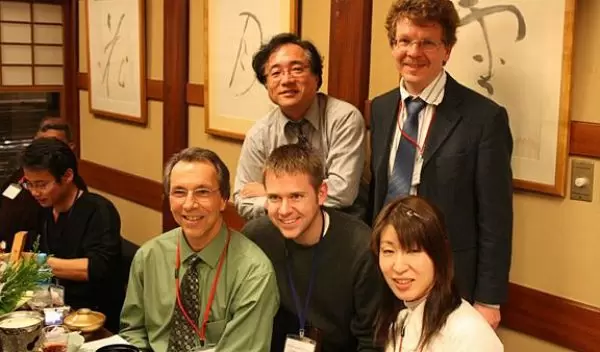
Students Give High Marks to First U.S.-Japan Glass Science School
"It was a fabulous academic and cultural trip."
That's what one of the participating students had to say about a first-of-its-kind, international meeting of glass scientists that allowed U.S. university students and researchers to meet their Japanese peers, brush up on developments in their field and discuss future collaborations.
The two-week-long U.S.-Japan Winter School on New Functionalities in Glass, held in Kyoto, Japan, paired 15 U.S. engineering students with 15 from Japan. Experts from the U.S., Japan, Brazil and France taught classes in glass research.
The school was sponsored by the International Materials Institute (IMI) for New Functionality in Glasses at Lehigh University in Bethlehem, Pa., and the Japanese Society for the Promotion of Science's (JSPS) Global Center of Excellence at Kyoto University.
The American students gave enthusiastic reviews of their experience.
"I was very impressed by the Japanese students' hospitality and friendship," said Donghui Zhao, a graduate student in materials science and engineering at Lehigh. "They were so helpful that the American students didn't even have to read the sightseeing maps or try to figure out what to eat in the restaurants."
"I very much appreciated this experience," said Shai Shafrir, a research associate at the University of Rochester's Laboratory for Laser Energetics. "It exposed me to important theoretical and experimental tools in glass science. A special mention has to go also to the high quality of the school's practitioners."
The topics covered at the school included laser patterning, the use of glass surfaces and coatings in biotechnology, the application of glass to fuel cells and the novel functionalities of chalcogenide glasses.
Zhao said some of the Winter School classes will directly benefit his research into chalcogenide glasses, which have applications in optics.
"I met professor Takayuki Komatsu of Nagaoka University of Technology," said Zhao. "We discussed the possibility of writing crystals in our chalcogenide glasses. After the school, with IMI support, I traveled to Nagaoka, where professor Komatsu and I did some preliminary experiments."
Shafrir conducts research into magnetorheological finishing (MRF), a technique used to polish optical glass and optical ceramic substrates. He found two seminars especially relevant to his research. One discussed how new, ultra-hard transparent ceramics have improved fracture resistance. The other discussed the designing of glasses to achieve desired mechanical properties.
Melodie Schmitt, a doctoral candidate at the University of Missouri-Rolla, said the Winter School rejuvenated her interest in glass science.
"Attending the school re-sparked my passion for glass," said Schmitt. "Meeting new people and learning about different research areas have made me excited to be part of such an important field at such an influential time."
Besides attending seminars, the students at the Winter School visited manufacturing facilities and presented their research projects. The students paired off in hotel rooms with their Japanese peers in order to optimize the opportunities for networking.
"Sharing hotel rooms gave us more chances to communicate," said Zhao. "We also had a lot of spare time for activities. We visited temples, hiked Daimonji Mountain, tried out Japanese foods and sake, and played musical instruments.
The school was co-organized by professors Kiyotaka Miura and Katsuhisa Tanaka of Kyoto University, professor Carlo Pantano of Pennsylvania State University, and Himanshu Jain, professor of materials science and engineering and director of the IMI at Lehigh.
"We believe the school helped provide the next generation of scientists and engineers with training in a global setting," said Jain. "The Japanese and American students met as strangers but left as professional colleagues and personal friends. They are the future leaders who will find solutions to challenges in energy, healthcare, safety and telecommunications."
The U.S. National Science Foundation, which provides financial support to the IMI, also helped fund the Winter School.


